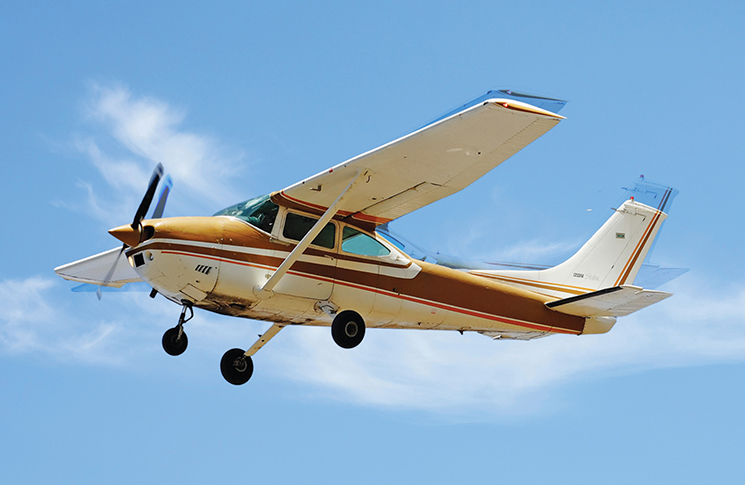As a CPL graduate, I’d just started my first job and was keen to prove myself. I did well at aviation theory and I’m not too bad at landing an aircraft so I considered myself as above average.
So then, of course, it wasn’t too big of a deal for me to fly into a remote airstrip in an old faithful Cessna 182. Everything seemed smooth sailing and, after joining midfield crosswind and carrying out my pre-landing checks, I began a normal approach.
On this particular day I was having trouble reducing my airspeed into the white arc (to safely use flaps), but I figured it must be a mountain wave off the nearby range which was keeping me in a nose-down attitude. Luckily, I did well at meteorology and know all about mountain waves, so this was no big deal.
I decided to reduce my power to idle, pitch up to wash off speed and then use full flap when I finally reached the safety of the white arc to make up for this annoyingly high base leg. Nothing I can’t handle, but mountain waves sure are seriously powerful things!
By the time I was at flap speed, I was turning final and was about 500 feet above where I’d hoped to be! But of course, I was a professional pilot now and going around is a waste of time. Let’s press on, it’s a long runway anyway.
With my full flap, idle throttle and inflated ego, I rode the top of the white arc all the way down towards the middle of the runway. I could hear the air whistling across the fuselage like I’ve never heard before. ‘Wow, I’m having to go pretty fast to fight this updraft!’ I thought to myself, blind to the trap I’m falling into.
The controls were sluggish, trim was wound back and all the numbers on the steam gauges looked a little wrong. ‘I’m almost there, just a little further and I’ll be on the ground with a good story about mountain waves,’ I thought, as I corrected the slight wing drops caused by what must be wind gusts. Tunnel vision had clearly got the better of me by now, even though I could feel something was wrong.
Finally, the time came to round out and land but as I pulled back on the control column, I was met with a rude shock. The control column was already all the way back! All in a split second I remembered Bob Tait teaching about the ‘stall stick position’ and realised that I’d led myself into a trap and it was time to brace for a heavy landing and written-off undercarriage.
Tunnel vision had clearly got the better of me by now, even though I could feel something was wrong.
Miraculously, luck was on my side and ground effect gave just enough help to stop the aircraft turning into a pancake. There was a solid bump as 3 wheels touched at once and I was finally able to relax my sweaty hands and taxi away. It was at that point that something caught my eye – my airspeed was still reading 80 knots!
My heart sank. I was obviously not taxiing at 80 knots. Something definitely wasn’t right.
What was it they made us learn in theory? P.U.D.S.U.C? (pitot-underread – descent, static-underread – climb.) What was it they made us learn in theory? ‘A blocked static vent will cause the ASI to overread when descending and underread when climbing.’
I fumbled around the cockpit for the alternate static and pulled the knob. My airspeed zapped back to zero. My altimeter spun down several hundred feet to field elevation.
After pondering for a while, I realised a blocked static means the altimeter and airspeed will overread in the descent.
So what was that sound I could hear? It was buffeting of wind at low speed. The sluggish controls and dropping wing weren’t the gusts of a mountain wave – those were the symptoms of a stall. My airspeed wasn’t actually at the top of the white arc, it was probably at the bottom the whole time.
Wow, that was close!
Lessons learnt
This is a threat I had no trouble understanding for a CASA exam but when it came time to the real-life thing, I gave myself no chance.
Now I pay particular attention to pre-flight checks and daily inspection, making sure that all pitot tubes and static ports are clear.
Remember that power + attitude = performance. Always! Know what performance (vertical speed and indicated airspeed) you will expect from a particular power setting and attitude. If it feels wrong, it probably is.
Non-controlled operations is one of the special topics on our Pilot safety hub. Refresh your knowledge at casa.gov.au/pilots







Comments are closed.